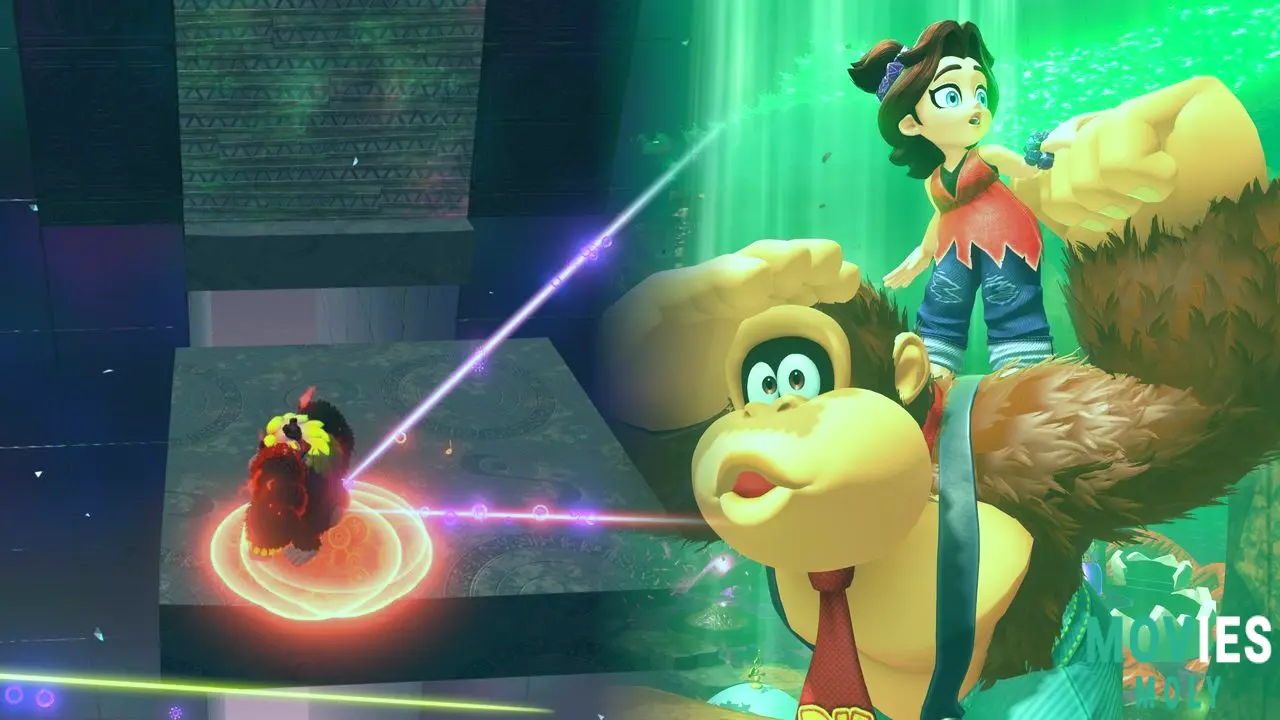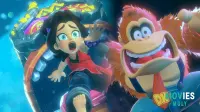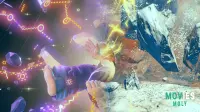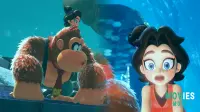Donkey Kong Bananza emerges as a major release for the Nintendo Switch 2, showcasing a huge new path for the iconic ape. This game, made by the same team that made the highly praised Super Mario Odyssey, promised to take Donkey Kong into a new era of 3D platforming. It keeps its promise by focusing on destruction and player freedom, which makes it different from other Nintendo games and even other Nintendo giants.
Playing: Breaking Through ExpectationsDonkey Kong Bananza is an action-platformer at its core that tells players to smash their way through levels. The game has a main mechanic that makes it stand out.
A core mechanic is destructible terrain.
The most interesting thing about Donkey Kong Bananza is its new destructible terrain. The environment is more than simply a backdrop; with modern voxel technology, it can be changed into a play space. Donkey Kong can punch, crunch, and blow up almost everything in his way, making his own way across the universe. This method lets you solve problems in unique ways and find secrets, which makes exploring feel natural and fun. As the Washington Post commented, "The huge new idea for 'Donkey Kong Bananza' is the best kind: a technical, visual marvel that gives new ways to interact with the game. Players can destroy the terrain whenever they choose. Rolling Stone also appreciated this component, noting, "By utilizing voxel technology, the developers designed a world where DK can punch, crunch, and explode his way through just about anything to carve his own path across the world."
Fighting and Enemies: Learning How to Punch
In Bananza, fighting is more than just pressing buttons. Donkey Kong includes a lot of moves, which can be hard to get used to, but you can utilize all of them right away. Different strikes make enemies act differently. Quick jabs might work well against smaller, faster attackers, while charged punches or environmental hazards would be needed to break the defenses of bigger, armored monsters. You can stun some foes and then throw them, which sets off a chain reaction of destruction that feels great. The game adds new types of enemies that blend in with the surroundings. To find and fight them, you need to be very observant and use DK's powers wisely. To finish challenge courses and boss fights quickly, you need to know when to do ground pounds and aerial assaults.
Level Design: New Ideas at Every Level
Players go across the game's globe by going down through different Layers that are underground. These levels are free to move around in, but they are also rather little, like the separate kingdoms in Super Mario Odyssey instead of a single universe. Level design is always changing, with later levels adding increasingly difficult riddles and dangers in the environment that can be destroyed. For instance, some places need to be destroyed in a specific way to change the flow of water or find secret paths. The destructible terrain changes over time, which gives players new problems to solve and makes them think outside the box about how to employ DK's powers.
The World of Donkey Kong Bananza: Levels, Layers, and Stories
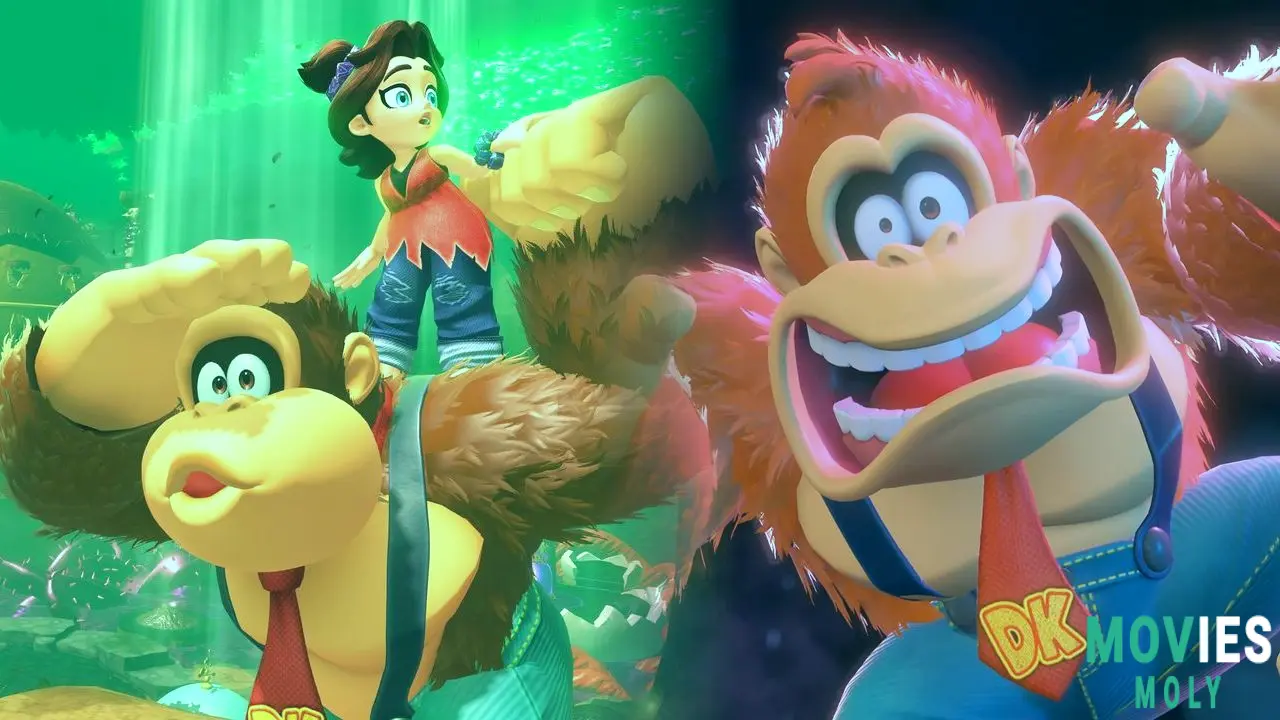
The hazy, organic, pastel-colored look of Donkey Kong Bananza is clearly inspired by contemporary Zelda games. Every layer is different, from the verdant Lagoon Layer to the industrial Orangu-Hang Highway. There are lots of little things in the world that are charming and convey stories about the environment that add to the mood.
The characters and story are DK, Pauline, and the search for bananas.
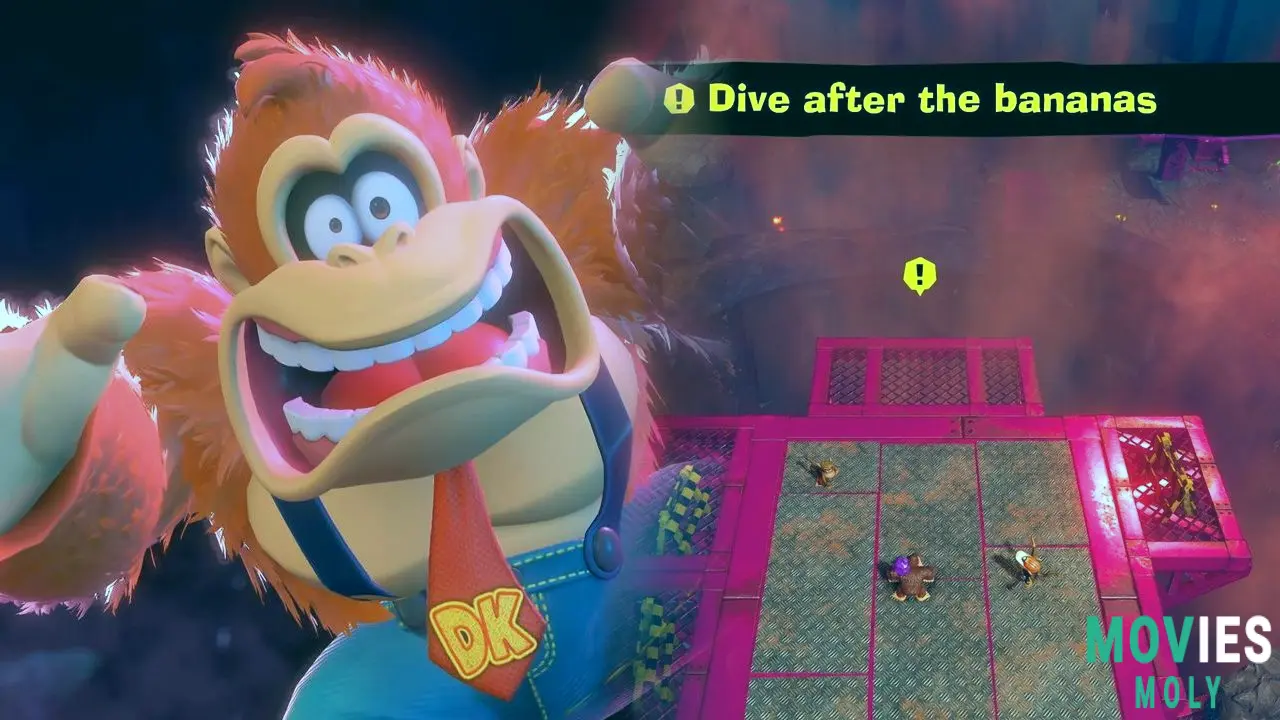
The plot of Donkey Kong Bananza is simple: DK wants to get back the stolen Banandium Gems. But it still manages to provide moments that are emotional and help the characters grow. Controlling Donkey Kong is a lot of fun because every detail shows off his physical strength and hilariously honest nature. This contains one-word choices for dialogue and menu buttons that break with a gratifying thwack.
Pauline's Role: Not Just a Sidekick
Pauline is an important part of the adventure because she helps and guides the main character. Her role is more than just a damsel in distress; she helps Donkey Kong get over problems and is an important part of the story. This relationship provides a new twist to the journey, with funny and real moments of connection between the characters.
Bananza Transformations: Letting Animals Loose
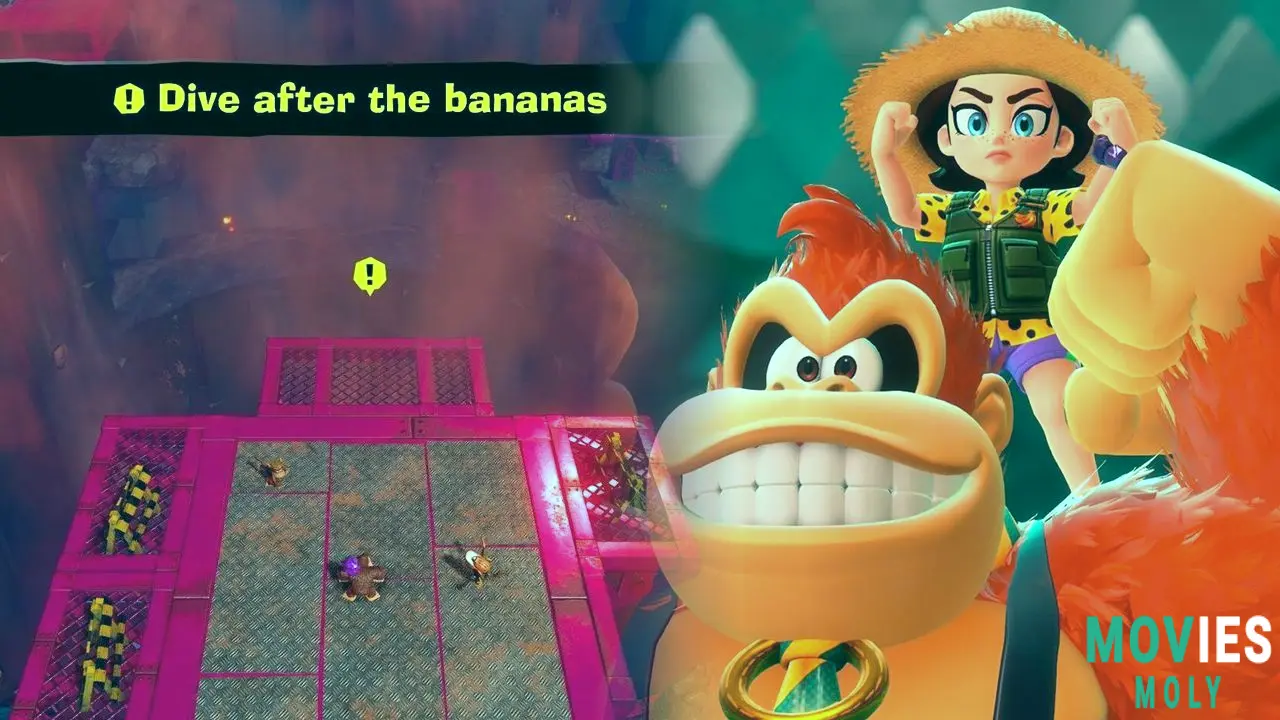
Donkey Kong's Bananza transformations are a big part of the game. Players fill up a "Bananergy" gauge by gathering gold and breaking up the ground. When DK is full, he can change into other animals, each of which gives him different powers. These changes make it possible to destroy things in different ways, such as with strong charge punches or piercing assaults. Being able to change anywhere helps players chain together devastation, which is a key part of the game. This method makes the gameplay feel like it's moving forward and changing in a gratifying way.
Banandium Gems, Skill Trees, and Other Collectibles and Progression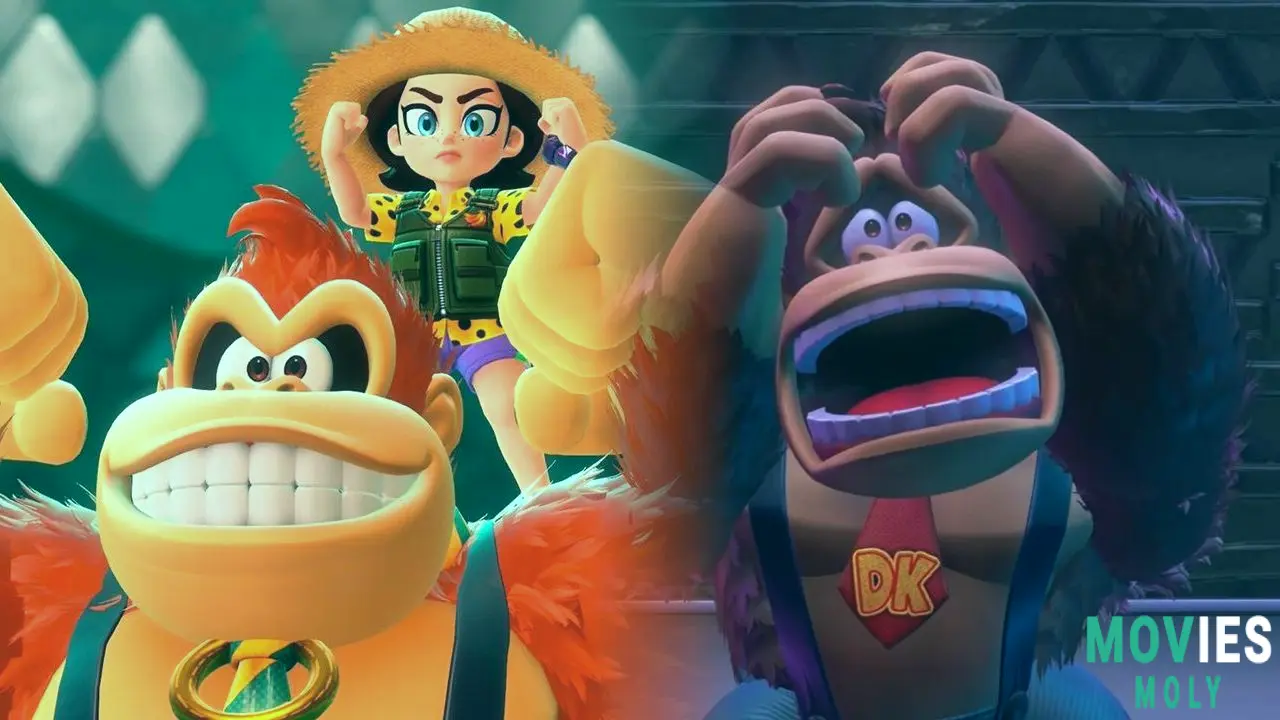
Where to Find Banandium Gems and Why They Matter
The main thing to collect in Donkey Kong Bananza is Banandium Gems. You need these crystal bananas to power up Donkey Kong and get skill points. Collecting them isn't necessary to move the main story along, but it makes the game a lot more fun. Each gem adds to a meter that gives you a skill point, which is a real reward for exploring. The catchy, thumping song that plays every time you collect a gem and a deep voice sings "Oh, Banana!" makes the procedure much more fun.
The Skill Tree: Making DK's Skills Unique
A actual skill tree is a startling addition to a Nintendo platformer that lets players change DK's skills. You can put the skill points you get from Banandium Gems into this. Early upgrades could focus on improving punch power or health, which are vital for early game progression. Later skills provide you more specific bonuses, such being able to move around better, getting Bananergy faster, or using special combat moves. Some skills are quite useful for certain challenge courses or boss encounters, while others make exploring easier and more enjoyable. This approach adds a nice touch of individuality to how Donkey Kong plays.
Technical Performance: Voxel Technology, Frame Rate, and Graphics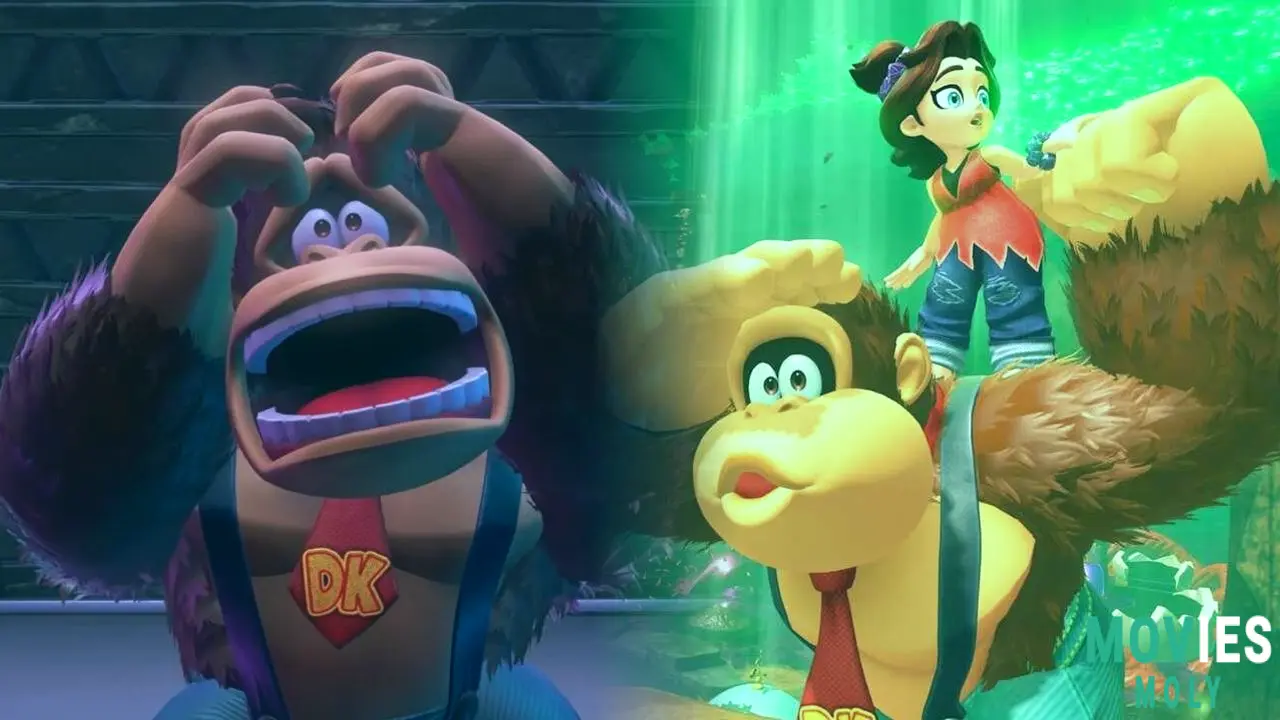
Nintendo Switch 2 Performance: Frame Rate, DLSS, and FSR1
Donkey Kong Bananza shows off what the Nintendo Switch 2 can do. The game runs well, and the frame rate is mostly stable, which keeps the action rapid. DLSS and FSR1 technologies allow to create the detailed voxel environments without causing a lot of performance losses. "This game is the best Nintendo Switch 2 title so far," TechRadar Gaming said, quoting Dashiell Wood. "It has an amazing destruction system that shows off the power of the new system." Sometimes, when the surroundings is really bad, there can be small dips, but these are rare and don't take away from the overall experience.
A New Look for DK: Art Style & Visuals
The painting style is vivid and expressive, giving Donkey Kong a fresh yet familiar image. His character design has been changed to show off his strength and funny appeal. He now has thick, luxuriant fur and facial expressions that show how he feels. The surroundings are bright and full of detail, so it's fun to explore each layer. The visual input from demolition is quick and satisfying, as the wreckage spreads out in a way that looks real.
Sound Design and Music: The Rhythmic Rumble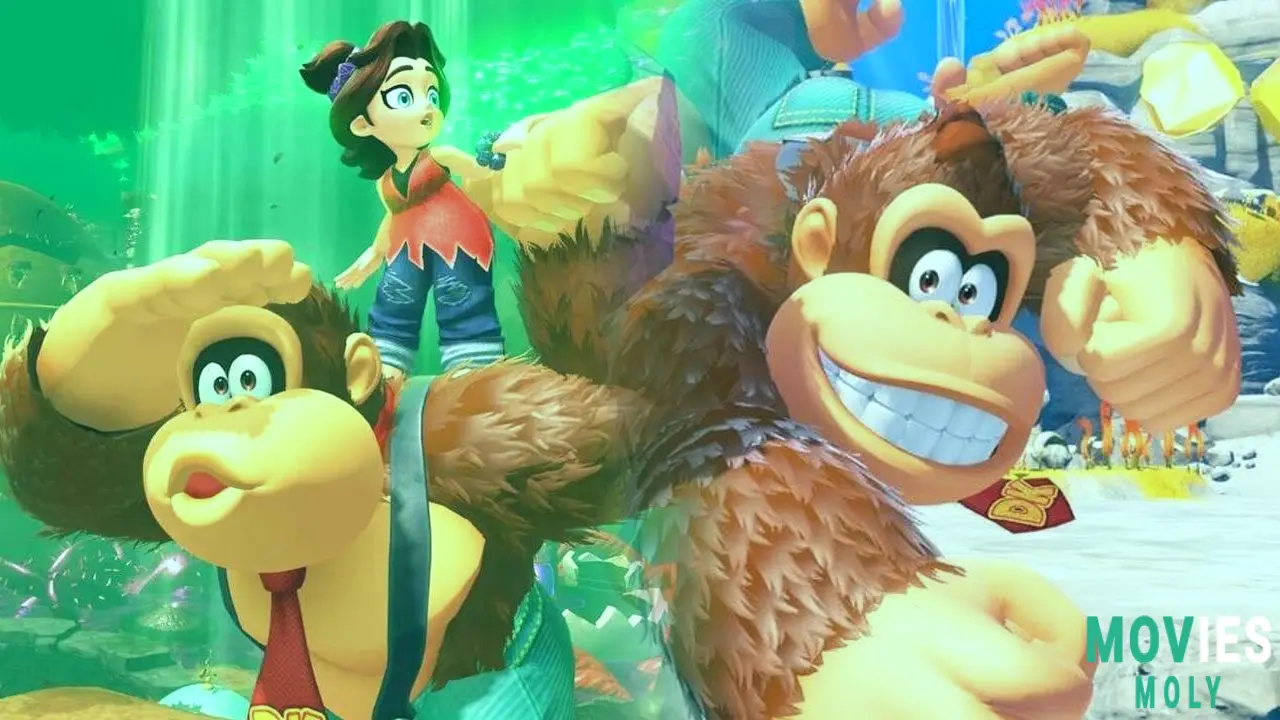
The sound design of Donkey Kong Bananza is really good. Every punch, smash, and explosion has a pleasing weight that makes the feeling of destructive force stronger. The soundtrack in the game is great; it mixes old Donkey Kong rhythms with fresh, thundering songs that go wonderfully with the action. Some sound effects, such the "Oh, Banana!" jingle or the sound of the menu buttons breaking, are distinctive and make the game more fun to play. The music keeps the enthusiasm up during fierce fights and makes exploring more fun.
How does Bananza compare to Mario and Zelda?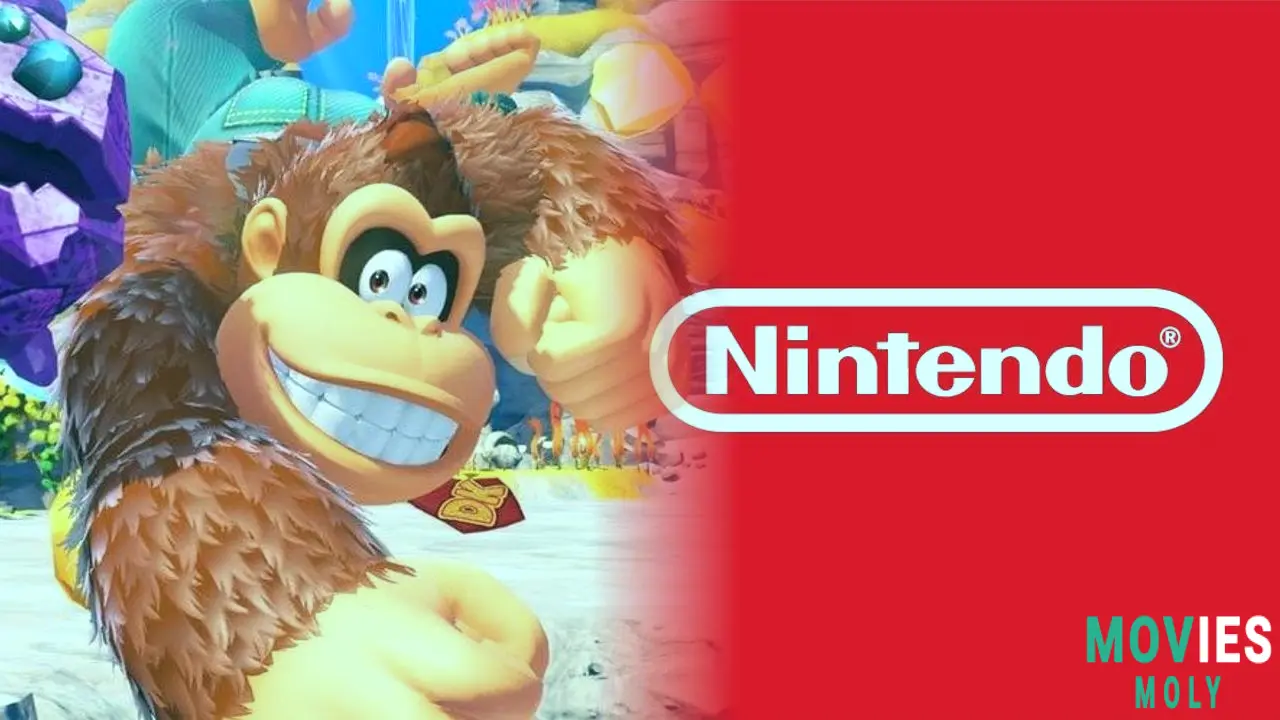
Donkey Kong Bananza is the first 3D platformer that Nintendo made and released after The Legend of Zelda: Breath of the Wild and Tears of the Kingdom. It takes a lot of ideas from previous games, but it still has its own Donkey Kong style. Polygon commented, "Donkey Kong Bananza shows just how much the last two Zeldas have changed Nintendo." Like the most recent Zelda games, Bananza gives players a lot of tools to use right away and lets them climb on almost any surface, which is unusual for a platformer. It includes some of the same structural features as other Nintendo 3D games, such as unlockable transformations, but its focus on player freedom and destructive skills makes it stand apart.
Co-op Mode: Is there twice as much destruction?Donkey Kong Bananza is a great co-op mode that lets two players work together to destroy twice as much. In co-op mode, one person plays Donkey Kong and the other controls a partner character, who has distinct powers. This affects the way the game is played a lot because players can work together to solve puzzles, beat monsters faster, or find hidden things. For example, one player might focus on clearing a passage by destroying things while the other collects treasures or keeps adversaries busy. With two players, boss encounters become more strategic because you may plan attacks and distractions together. The co-op mode feels like a natural part of the single-player experience, not something that was added later.
Replayability and Content After the GameDonkey Kong Bananza has a lot more content after the game, in addition to collecting all the Banandium Gems. This adds new challenge courses that are harder, time trials for levels that are already there, and more collectibles that unlock cosmetic items or further skill tree improvements. There are also hidden boss rematches with different mechanics, which provide experienced players a new challenge. The game's focus on destructible landscapes means that going back to levels often shows you new methods to get around or interact with them, which makes you want to go through them again and again to find all the secrets.
The Verdict: Is Donkey Kong Bananza a Must-Play?A Quick Look at the Pros and Cons
Pros: new destructible environment, fun battle mechanics, interesting Bananza transformations, a skill tree that rewards players, bright graphics, great sound design, a powerful co-op option, and a lot of stuff after the game.
Cons: It takes some time to get used to the controls, and the frame rate can drop a little bit during heavy devastation.
Is the Price Fair? Value for Money
Donkey Kong Bananza has a lot of material for the price. The game has a great main plot, a lot of treasures, hard things to do after you beat it, and a fun co-op feature that will keep you busy for hours. Compared to other Nintendo Switch 2 launch games, its unique mechanics and great production value make it a good buy for platformer enthusiasts and anyone who want to try something new in the genre.
Features that make it easier to use
The game contains various accessibility options, such as remappable controls and configurable difficulty settings, appealing to a larger spectrum of players. There wasn't a colorblind mode in the review build, but the overall clarity of the visuals is good for a wide range of players.
Analysis of UI/UX
The menus are easy to understand, and the prompts in the game are useful. The map system is straightforward to navigate, and objectives are provided clearly. The overall experience is fluid, which lets players focus on the action without having to deal with confusing controls.

